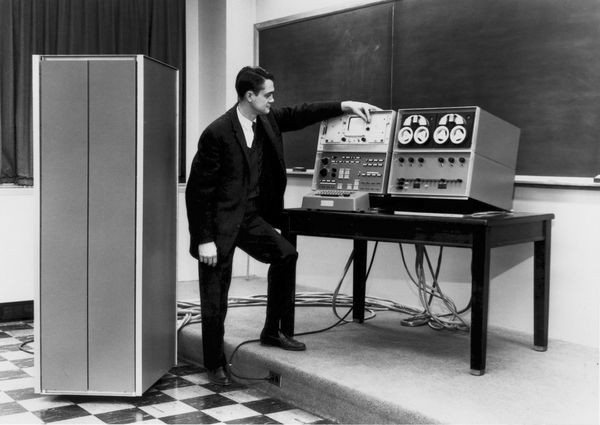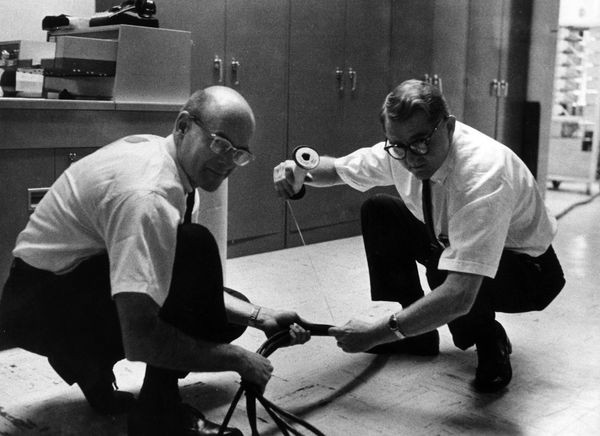A New Approach to Computers
Wes Clark demonstrating the LINC at Lincoln Labs
Wes Clark had previously been responsible for the logic design of the Lab’s TX-0 and TX-2 computers.
A New Approach to Computers
There were small computers as early as the 1950s. But they were expensive and slow—which meant you had to be important to have one...and not in a rush.
As the cost of transistors and memory dropped, however, fast, small computers became affordable. They began to appear in the lab, inside corporate departments, and on the manufacturing line.
LGP-30 with operators
The LGP-30 was among the first small, single-user computers. It presaged the arrival of minicomputers a decade later, achieving its low price of $49,500 with a clever design using only 113 vacuum tubes. But it was very slow.
View Artifact DetailThe First PC?
Three years before DEC launched its wildly successful PDP-8 minicomputer, MIT physicist Wes Clark had already begun building an affordable, easy to use, “personal” computer.
Working with MIT neuroscientist Walter Rosenblith and physiologist Charles Molnar, Clark built a prototype computer that could be used in the laboratory to collect and process data from experiments.
At its 1962 meeting, the National Academy of Sciences was so impressed with Clark’s LINC (Laboratory Instrument Computer) that it funded the construction of about a dozen more for science laboratories around the country.
LINC Computer
LINC was the perfect science laboratory computer. It had built-in A/D and D/A converters for interfacing with the outside “analog” world, an oscilloscope to display signals, text and programs, and “LINCtape” to store programs and data.
View Artifact DetailLINCtape
LINCtape was one of the earliest forms of personal data storage. It grew from designer Wes Clark’s insistence that there be a way for users to store their own data and walk away with it in their jacket pockets.
View Artifact DetailDECtape
DEC later modified the LINCtape design and offered it on many of its computers as DECtape.
View Artifact Detail"LINC was the world's first personal computer."
Scientists assembling a LINC
Scientists from around the U.S. came to Boston in the summer of 1963 to build their own LINCs. None were computer experts when they arrived, but all were by the time they left with their own hand-crafted LINCs.
View Artifact Detail




